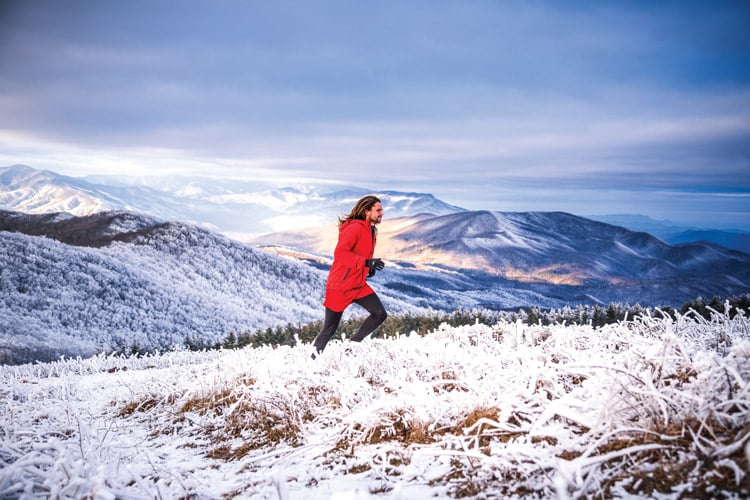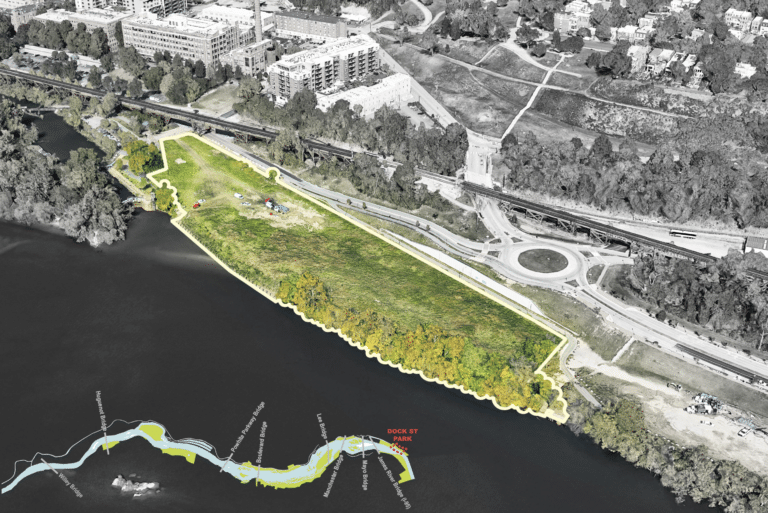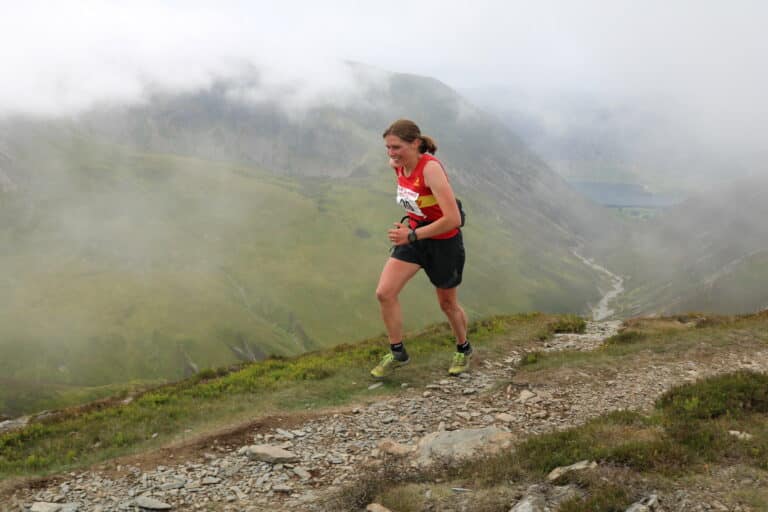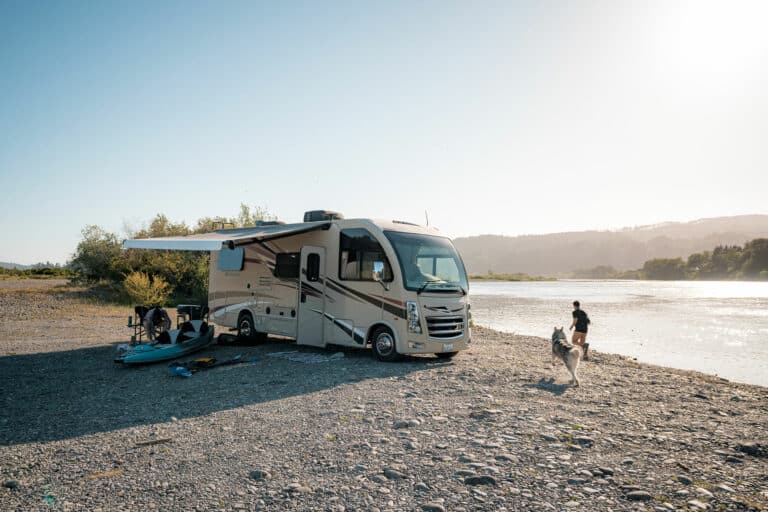The 8 Toughest Ultras in the South
At one time, ultramarathons were a niche sport. They were ridiculously long distance races that only the craziest endurance athletes were willing to attempt.
Today, several hundred ultramarathons occur around the United States every year. Although an ultramarathon is technically anything longer that 26.2 miles, the most extreme races push the boundaries of humans can endure.
Karl Meltzer, former holder of the fastest known time on the Appalachian Trail, has completed more than 100 ultramarathons since 1996. For him, these long-distance races are less cutthroat than other sports and are about more than the physical challenge.
“The mental part is can I actually suck it up for 20 hours, 30 hours, 40 hours, or whatever,” he said. “That’s the fun part—well sort of the fun part—when you cross the finish line. It doesn’t even matter what your time is. It’s just a matter of you got it done. That’s the real addiction.”
Southern Appalachia is home to some of the country’s toughest ultras. If you’re looking to test your mettle, these events will take you to the edge.
Pinhoti 100 (Ala.)
November 2-3, 2019
Starting from Pine Glen Campground, runners have to contend with rocky trails and more than 28,000 feet of elevation change over this 100-mile course. Through the Talladega National Forest in Alabama, competitors climb and descend Mount Cheaha, the highest point in the state.
Meltzer, a three-time Pinhoti winner, lives in the mountains of Utah but said he enjoys running the trails back east among the trees.
“I like to run in the woods,” he said. “Having done the A.T. three times, that’s a pretty good example of what I like to do. So Pinhoti was really a great fit. The beauty is being actually in the woods and being away from everything else.”
Over the years, more races have begun using lotteries for race entries as they become more popular. In most cases, the trail can only handle so many runners meaning race directors are limited in how much they can grow. That’s why Meltzer enjoys the lesser known races that still challenge his endurance.
“I don’t care who is there, how competitive it is, I really just want a good course where I enjoy myself instead of doing what other people think I should do or trying to run the Western States as fast as I can,” he said. “I mean those races are great too, don’t get me wrong, but there’s so much hype and media around a few certain races. I think the low-key race, like Pinhoti, is what I like the best.”
Mount Mitchell Challenge (N.C.)
February 23, 2019
Jay Curwen won the first Mount Mitchell Challenge in 1999, a 40-mile race to the top of the highest peak on the East Coast and back to the town of Black Mountain. Two decades later, Curwen has taken over for his father as race director of the challenge and accompanying marathon.
“At the end of the day, you only run one hill,” Guido Ferrari said. “But it’s one hill that is 20 miles long. There are not that many races that can claim that kind of consistent ascent. Then you have to come all the way down.”
Ferrari was friends with Curwen’s father and was the first one to sign up for the original marathon. He has now run the challenge every single year since.
“It has become a streak,” he said. “Once you run the first 10 in a row, even if you’re not winning, you’re supposed to go back to keep the streak alive. It’s a good measurement of how I age, slowly.”
In addition to all the elevation change, runners have to contend with mountainous weather conditions at the end of February.
“We have had sub 10 degrees and blizzards and we have had 65 degrees and sun,” Curwen said. “Depending on how deep the snow is or how tough the winter is, we’ve had to modify the scope and a couple of different things. Every year we have to let the fire rescue and support teams dictate to us where we can go and how they comfortable they feel to be able to cover the runners and make everybody safe.”
Over the years, the challenge has become a staple event in the town.
“We’ve sold it out every year for 21 years,” Curwen said. “We’ll have anywhere from 1,500 to as many as 2,500 or so trying to get in for only 200 spots.”
Ferrari says Mount Mitchell is the one race he’ll run until he can’t move his legs.
“It’s one of those things that, at this point it becomes, okay it’s February, I need to go up to the top of Mount Mitchell,” he said.
West Virginia Trilogy (W. Va.)
October 11-13, 2019

Three days, three different events, back to back to back. The West Virginia Trilogy consists of a 50K on Friday, a 50 miler on Saturday, and a half marathon on Sunday. Most runners choose to spend each night at the basecamp before hitting the trails again the following day.
Adam Casseday, one of the race directors and founders of the event, originally wanted to put together a 100-mile race in West Virginia. But he couldn’t find a location worthy of an event of that magnitude and the logistics of putting on that kind of event were intimidating.
“We wanted to create an event that was as much about the camaraderie and the challenge as it was the pure race,” he said. “It’s not truly as much about competition as much as the fellowship of runners enjoying nature and the outdoors together instead of trying to outrun your competitors. By Saturday, you lose a lot of the type A, stressful runner aura. It’s more a brotherhood and sisterhood. People trying to help each other out, running together rather than trying to beat each other.”
The course takes runners through the West Virginia Mountains during peak fall foliage season, including a summit of Spruce Knob during the 50 miler.
“Most trails in West Virginia as a whole are pretty wild and rugged because we just don’t have the trail users that you see in Virginia and North Carolina,” Casseday said. “By default, these trails are more wet and rocky and rugged.”
Kelly MacDonald kept hearing about how special the event was from runners at other events. She put it on her bucket list of races and got the chance to compete in 2018. She said being out on the trail wasn’t the most challenging part of the event. It was the downtime when her legs were tired, and she knew there were still more miles to run.
“The most daunting part was each evening,” she said. “I’m in this big yurt eating my dinner and thinking about the distance I’d have to run the next day, not sure I could do it.”
Georgia Death Race (Ga.)
March 30-31, 2019
With the Georgia Death Race, Sean Blanton’s goal is to discourage competitors from finishing. He’s even hired someone to play the grim reaper and heckle runners on the trail.
“Sometimes I have people out there in the woods that are playing wild boar noises on CD players,” Blanton said. “We have signs out there that really just get into your head. The point of this race is to make people extremely uncomfortable in the sense of you’ve lost everything and the only thing you have left is just moving forward. This race is meant for you to question why do I run? Why did I sign up for this?”
The 70ish mile race from Vogel State Park to Amicalola Falls State Park takes runners to the summit of Brasstown Bald, the highest point in Georgia.
“You get within 100 feet of the finish line and then you have to go 1,100 feet upstairs, up the waterfall, and then come back down on a really shitty, technical trail,” Blanton said. “The end’s almost the worst part.”
He also requires each entrant to complete eight hours of trail maintenance or other community service to give back to the trails. Blanton, who has run 150 ultramarathons around the world, has to turn away runners when the 400 spots fill up.
“Why do people run these challenges? Why would somebody want to run one of these things?” he said. “When people ask why do you do that, I answer the same way every time. If you have to ask me that question, you will never understand the answer. Unless you go out there and are experiencing these things, it’s just going to be crazy.”
Ozone Endurance Challenge (Tenn.)
May 29- June 2, 2019
The Ozone Endurance Challenge asks how long do you want to be on the trail? Runners choose to compete from six to 96 hours, attempting to complete as many loops of the two-mile track as possible before time is up.
“It’s a way of testing yourself,” Laura Eriks said. “People say, ‘Well I can’t run any further than a marathon.’ You set those standards. But you get involved with these events and you can really see what your limits are and then push those back. It’s always exciting when you take those first few steps past any mileage that you’ve ever completed.”
Eriks, who was coming off an injury when she ran the 96-hour event in 2018, said this was a way to start running again on a relatively flat course.
“In ultrarunning, it’s not just putting one foot in front of the other,” she said. “There’s the mental aspect of keeping going, especially when you’re racing through the night or two nights or three nights. Trying to manage your food and different things like that. It’s a challenge but there’s such a community.”
In running for such a long time, competitors have to strategize when they will sleep, what they will eat, and how to manage the Tennessee heat.
“I went through probably six pairs of shoes and a dozen pairs of socks during the race, constantly changing socks and shoes,” said Jeff Woody.
Woody ran the 48-hour event the first year the event was held in 2016. Race director Will Jorgensen added a longer option each year, with 72 hours in 2017 and 96 hours in 2018, to challenge how long runners would be willing to run around in a loop. Each year, Woody kept going for the longest time.
“You have to disconnect, to some degree, from time,” he said. “You have to take yourself out and focus on what you’re doing there. The neat thing about it is, it’s not just about who is the youngest and the strongest. A lot of strategy comes into play.”
Hellgate 100K (Va.)
December 14, 2019
The Hellgate 100K is a winter race so intense, it comes with its own medical condition.
“The cold dry air, the wind blowing, and runners running at night a lot, they get Hellgate eyes,” said race director David Horton. “They need to wear glasses and keep blinking their eyes or put liquid in. It’s like seeing through cellophane or something.”
Jordan Chang first ran the race as a sophomore in college and didn’t think he was going to finish that year. But he has now run the 66.6-mile race every year for the last twelve years and has avoided Hellgate eyes so far.
“People react very differently to it,” he said. “Some people are like, well, it’s happening, and other people are freaking out.”
The race starts at 12:01 a.m. on Saturday morning so that most runners are finished by sunset.
“I just love how everyone runs the same amount of time at night,” Chang said. “It’s very unique in ultrarunning. Most of the time, the faster people will run less in the night than the slower people. But this, everyone runs the same amount. Everyone’s got seven hours of it no matter what.”
In addition to the unusual start time, runners have to contend with the whims of Virginia in December.
“I’ve done it where I finished without a shirt on because it was 80 degrees,” Chang said. “I’ve done it where there was snow and ice and temperatures in the negatives. You never know what’s going to happen until race day.”
Although he’s only in his 30s, Chang said the sport of ultrarunning has exploded since he ran his first race in college.
“I’ve been in this sport longer than most people and just seeing that change from this group of weirdos running in the woods to fairly mainstream,” he said. “Running 100 miles is not unheard of anymore.”
The popularity of the Hellgate 100K has also exploded.
“It’s really grown, not necessarily in size,” Chang said. “Dr. Horton’s kept it pretty small to keep it intimate. But there’s a lot of hype around it, a lot of people trying to get in… It’s a good thing. It’s very exciting to see this kind of energy around the sport and these kinds of races. Over the years, it’s gotten much more competitive and times are getting so much faster. Every year, people are throwing down times that just a year before we thought were impossible.”
Ultimately, Chang said he enjoys trail running for more than the competition because it gives him the opportunity to see “stuff that you’ll never see unless you did it on foot. Being able to see nature on foot in places where you can’t take a bike, you can’t take a car, you can’t paddle to.”
Big Backyard Ultra (Tenn.)
October 19, 2019
If you follow the ultrarunning world, chances are you have heard of the Barkley Marathon. Runners have 60 hours to complete the brutal 100-mile course designed by Gary “Lazarus Lake” Cantrell. Since 1986, only 15 runners have completed all five laps in the allotted time.
The Barkley Fall Classic, a 50K, gives runners a taste of what the Barkley Marathon is like with winners automatically receiving a spot in the Big Barkley.
“He’s [Cantrell] a really great person to have in the sport, coming up with all these ways to push us harder and farther than we’ve ever been,” ultrarunner Courtney Dauwalter said.
In addition to the marathons, Cantrell puts on another, an equally challenging event where there is no time limit or distance limit. At the Big Backyard Ultra, runners simply run until they can’t run anymore.
At 6:40 on Saturday morning, runners head out on the 4.166667-mile course. They have an hour to complete the route before they have to head out for another lap. This continues every hour until only one runner remains.
Courtney Dauwalter, a dominant force in the ultrarunning community, ran 279.1 miles. After lap 67, she said she had nothing left in her. She plans to return to the backyard one day to see if she can push herself even further.
“I think the atmosphere of it is really special,” she said. “When people drop out, they stick around and get basically incorporated into other people who are still in the race and their crew. So, you end up gaining friends and crew members and all this assistance throughout the race because people stay and are just a part of it.”
(Read more about Dauwalter and the Big Backyard Ultra on page 18).
War Hammer 100 (Ky.)
June 8, 2019
Look out for the War Hammer 100. In 2018, only a third of runners finished the 100-mile race in its inaugural year.
“We created it to kind of be this big journey,” Mike Whisman said. “You start in one part of Kentucky and by the end of the weekend, you’ll be in a different part of the state. We pitched the race as true Kentucky, the good, the bad, and the ugly.”
Whisman helps his wife, Brandy, put on a series of races in Kentucky. The pair wanted to create a longer event that highlighted many of the sights and sounds of the state. Since the race was new, runners weren’t quite sure what to expect from the course that starts at Red River Gorge.
“There’s not a lot of climbing, it’s not technical,” Whisman said. “But these things that you don’t really anticipate really took a toll on people.”
Unlike other trail races on the East Coast where trees provide a good bit of cover, the War Hammer twists along backcountry roads where runners find it hard to escape from the sun.
“There are some long stretches of road, be it gravel road and even some paved road, in the middle of the race,” Whisman said. “So that means a lot of people were running through some pretty exposed areas with no shade in the middle of the afternoon in June. And they were just getting baked.”
Blue Ridge Outdoors Magazine Takes on Ragnar
April 26-27, 2019
The Ragnar Relay Series started 16 years ago as the Ragnar Wasatch Back in Utah. Today, there are more than 40 road and trail relay races in the series across the U.S. and internationally.
In April, several members of the BRO family will take on the Ragnar Trail Relay at Pocahontas State Park in Richmond, Va. Over the course of the weekend, each person will run three loops for a total 15.4 miles.
Rachel Fitzgerald, director of market development for Ragnar, said the majority of the Richmond course is mountain bike singletrack trails with some paved surfaces.
“It is true trails,” she said. “A lot of events will be on some of the rail trails in the area, but these are true woodland, rocks and roots type trails.”
In between loops, runners rest and hang out with friends at the centralized base camp before gearing up for another round.
“It’s a challenging achievement and certainly something to brag about, but it is a really unique and special community that’s so welcoming of everyone,” Fitzgerald said.
BRO Account Executive Hannah Cooper runs a half marathon and a few other races every year but said this trail race will be a new challenge since it’s longer than anything else she has done.
“It’s a lot harder than a typical street race mentally and physically,” Cooper said. “On a street race, there are all these people around and support. It’s super easy to bail if you needed to. Whereas out on the trail, you’re out there alone. You have to be really focused on the footsteps, especially when we’re running through the night.”
Check back in a few months to see how the BRO team fared out on the trail.








